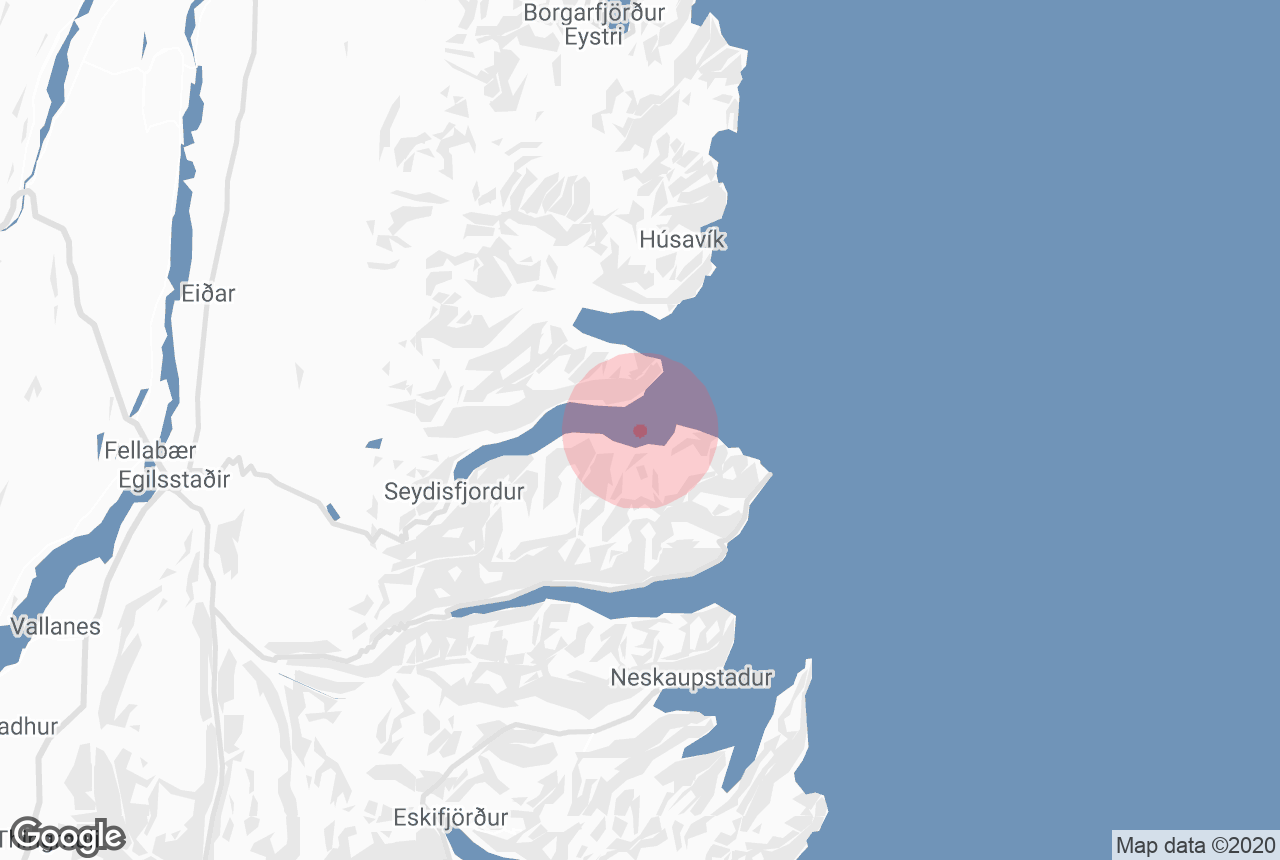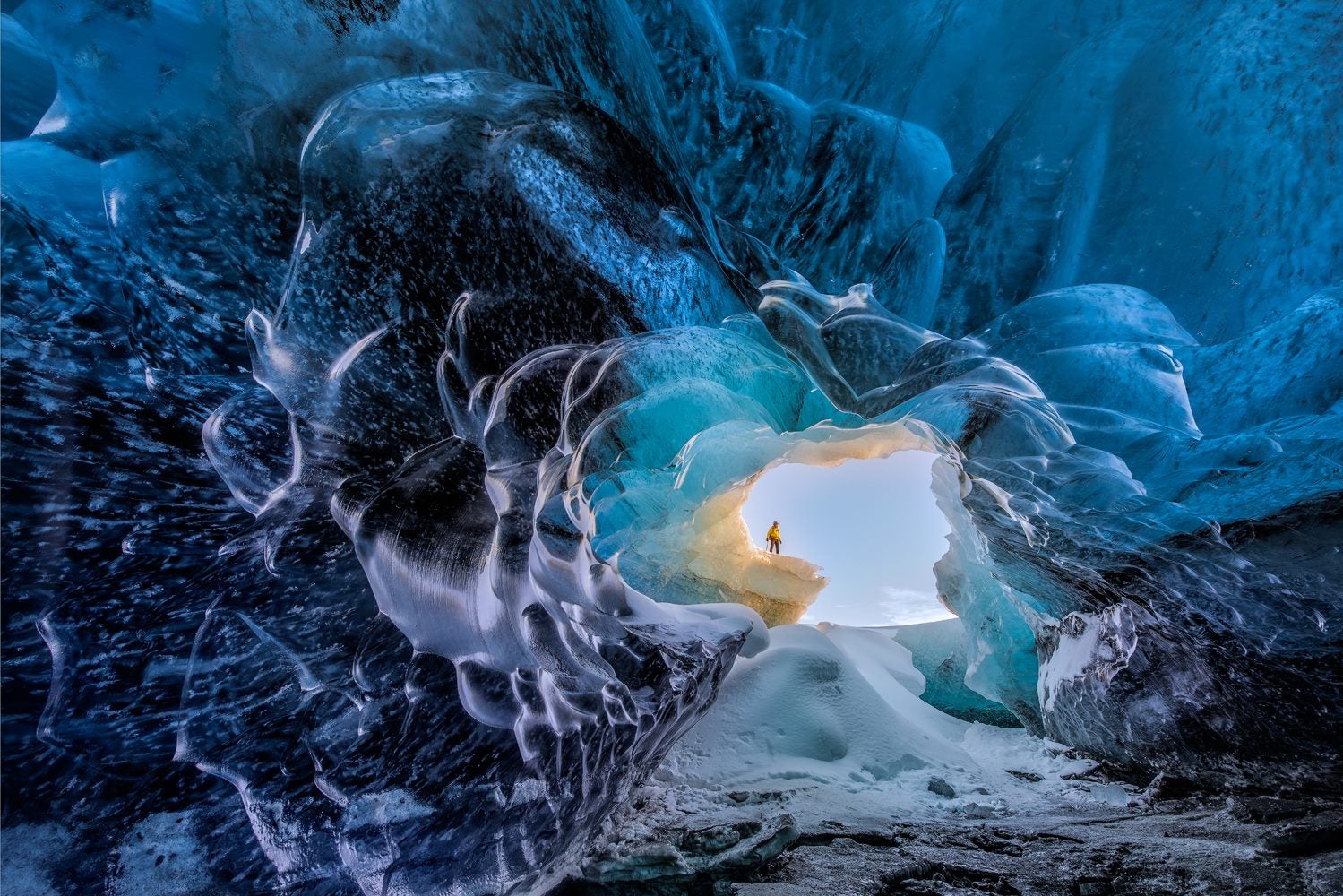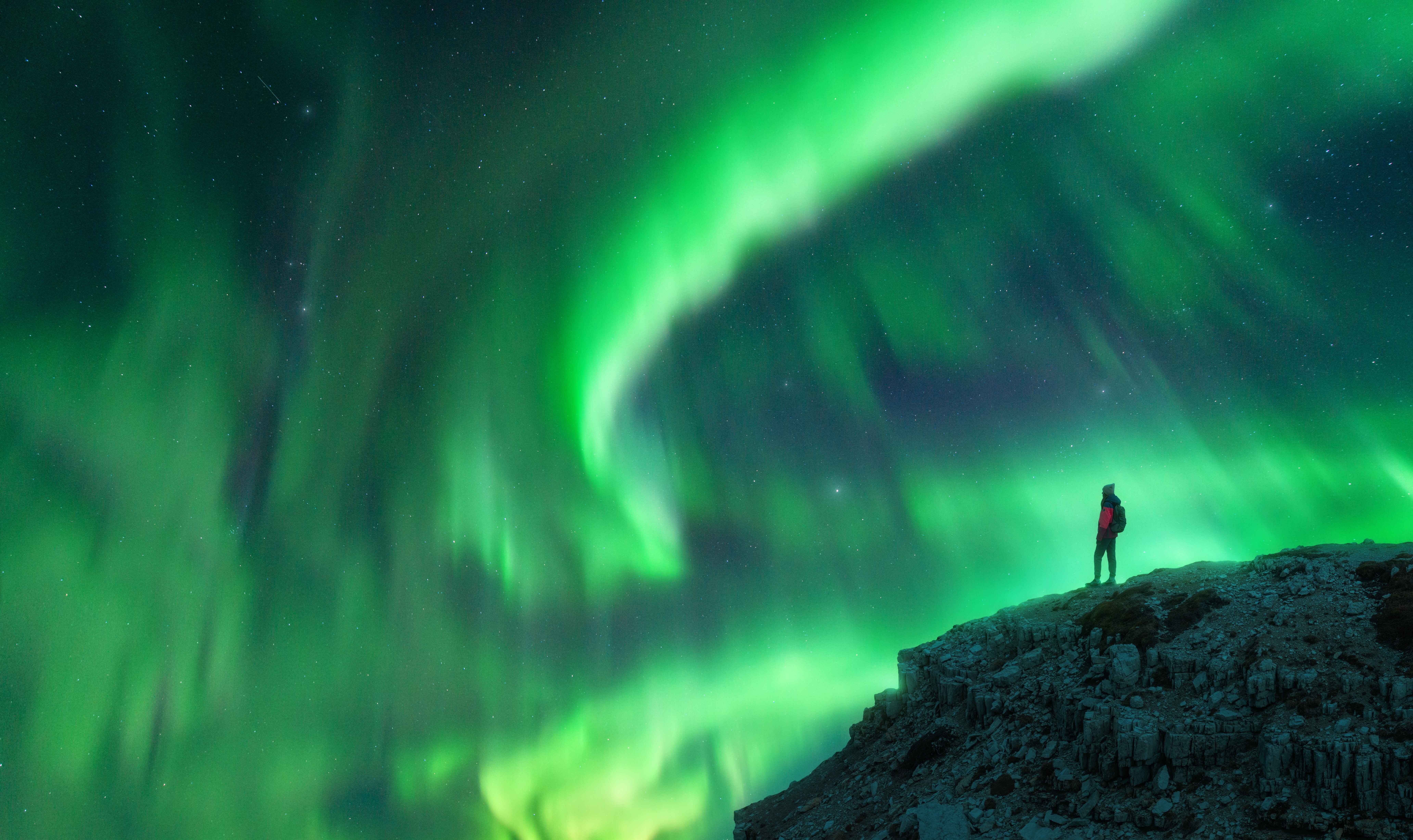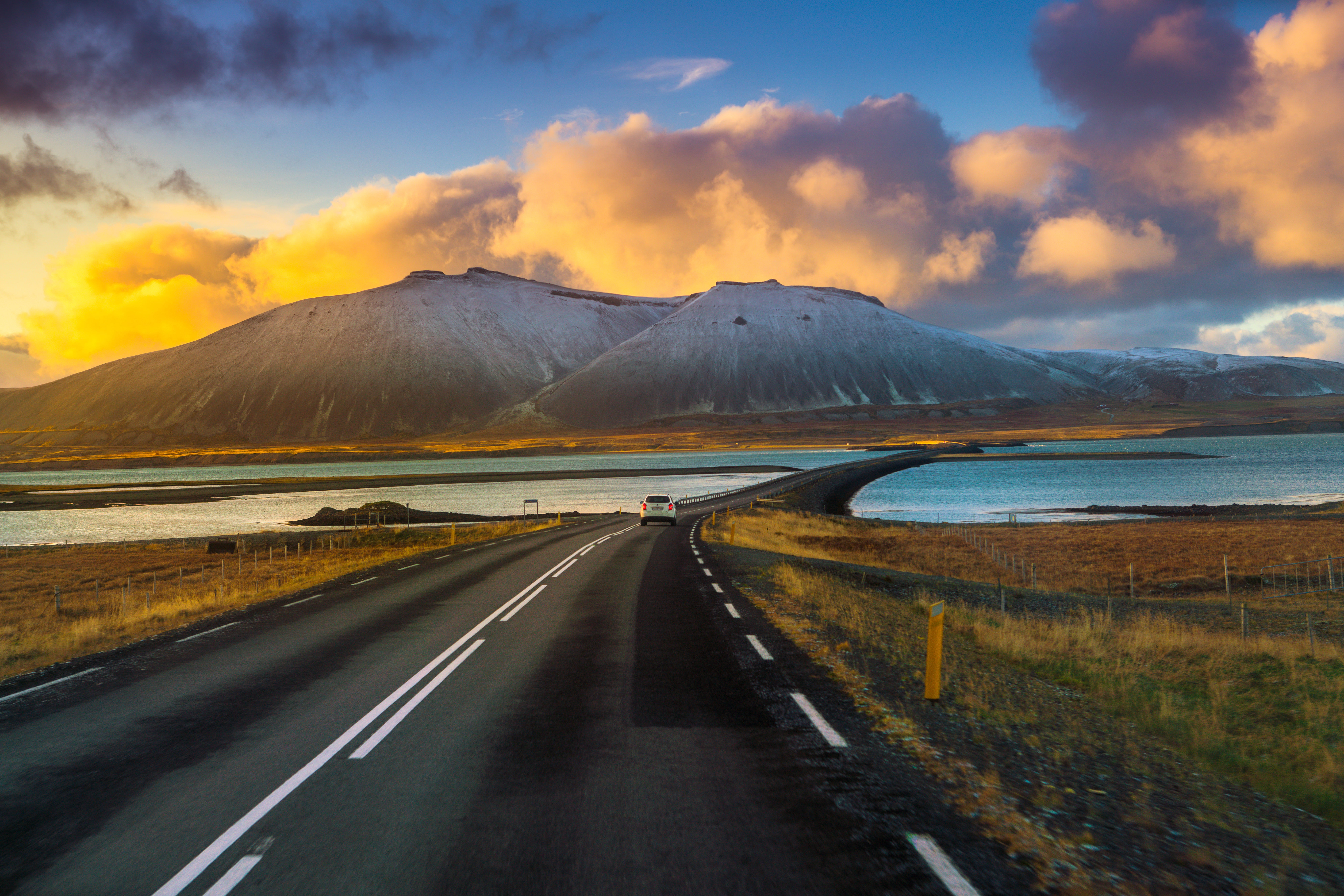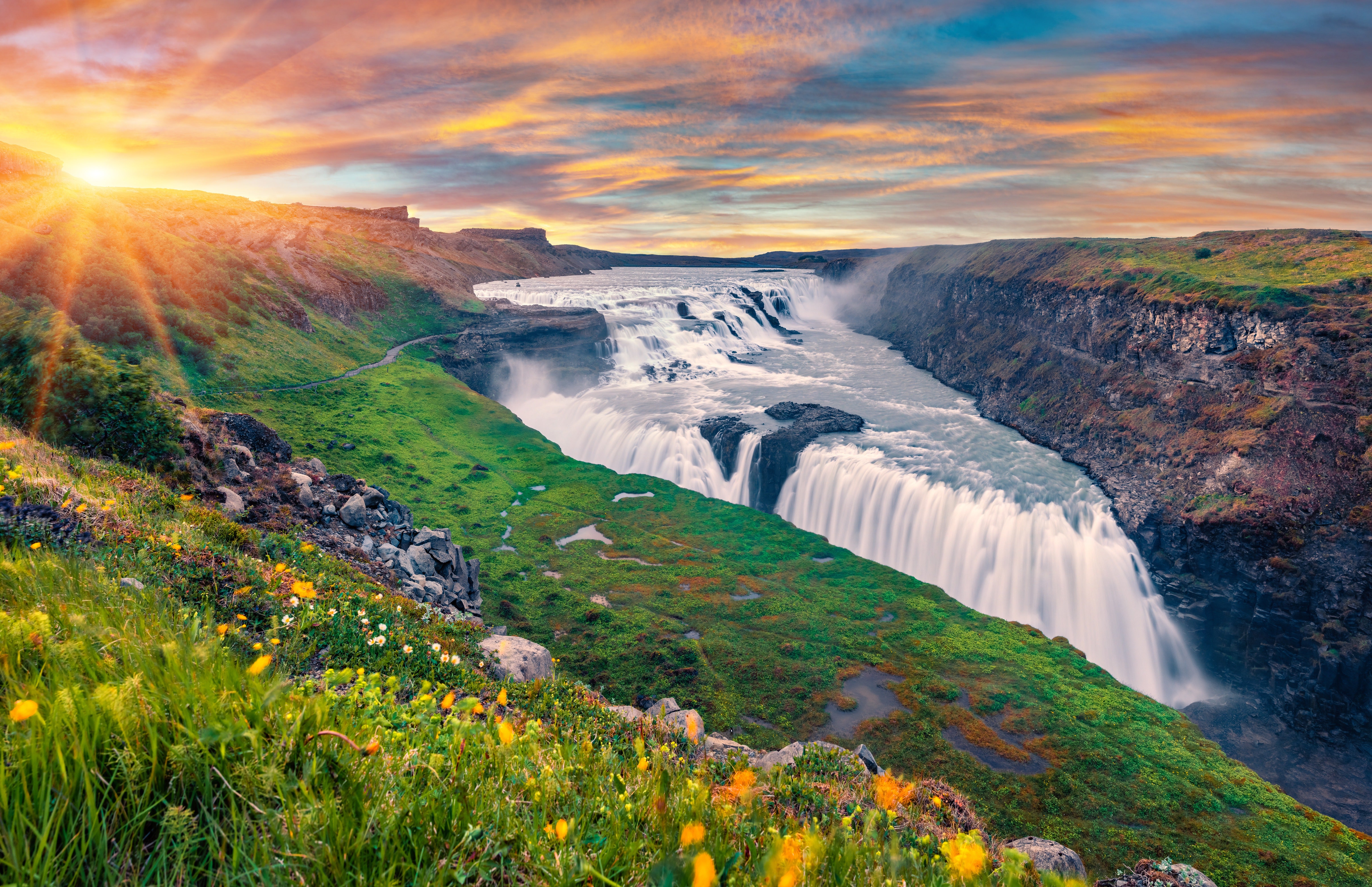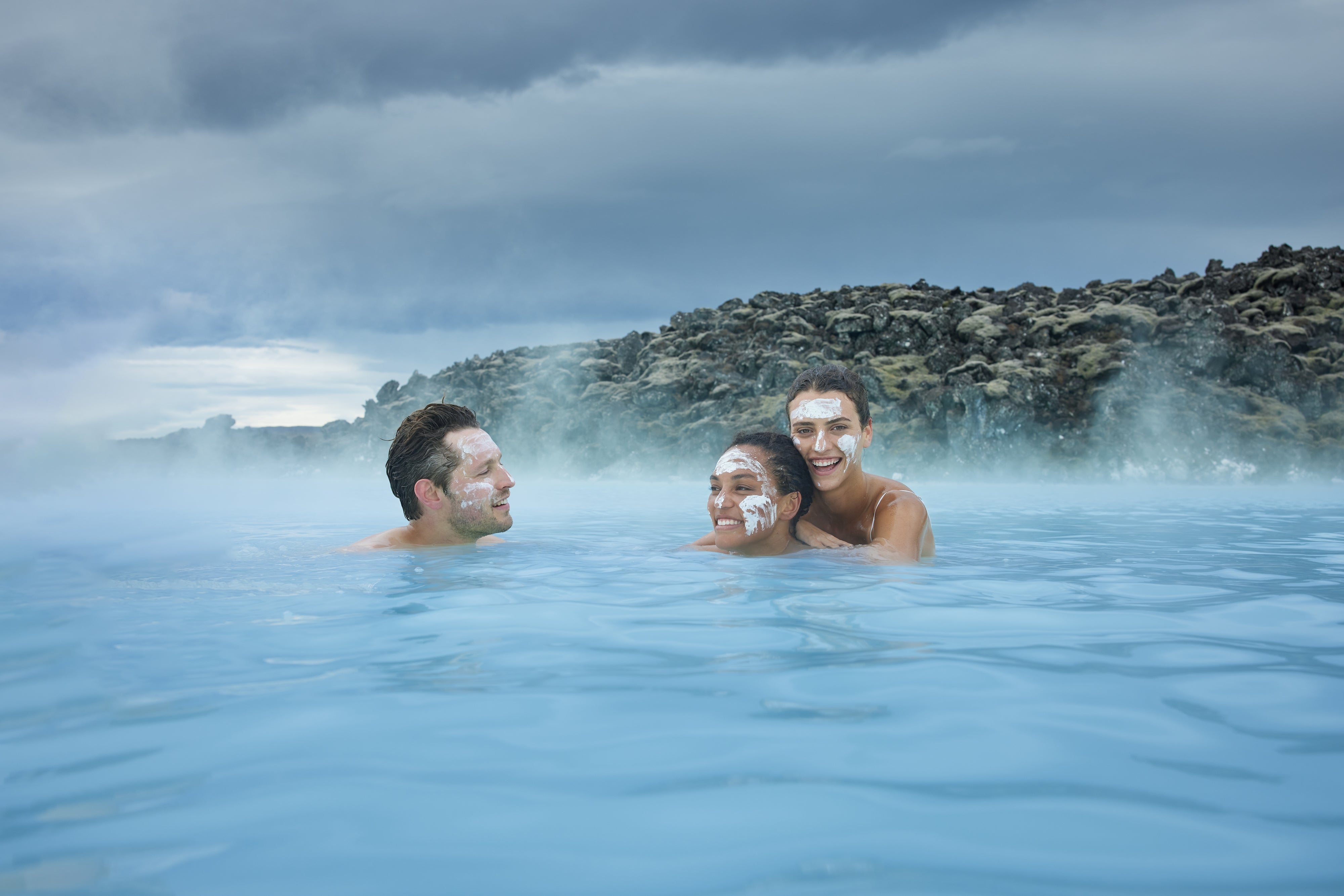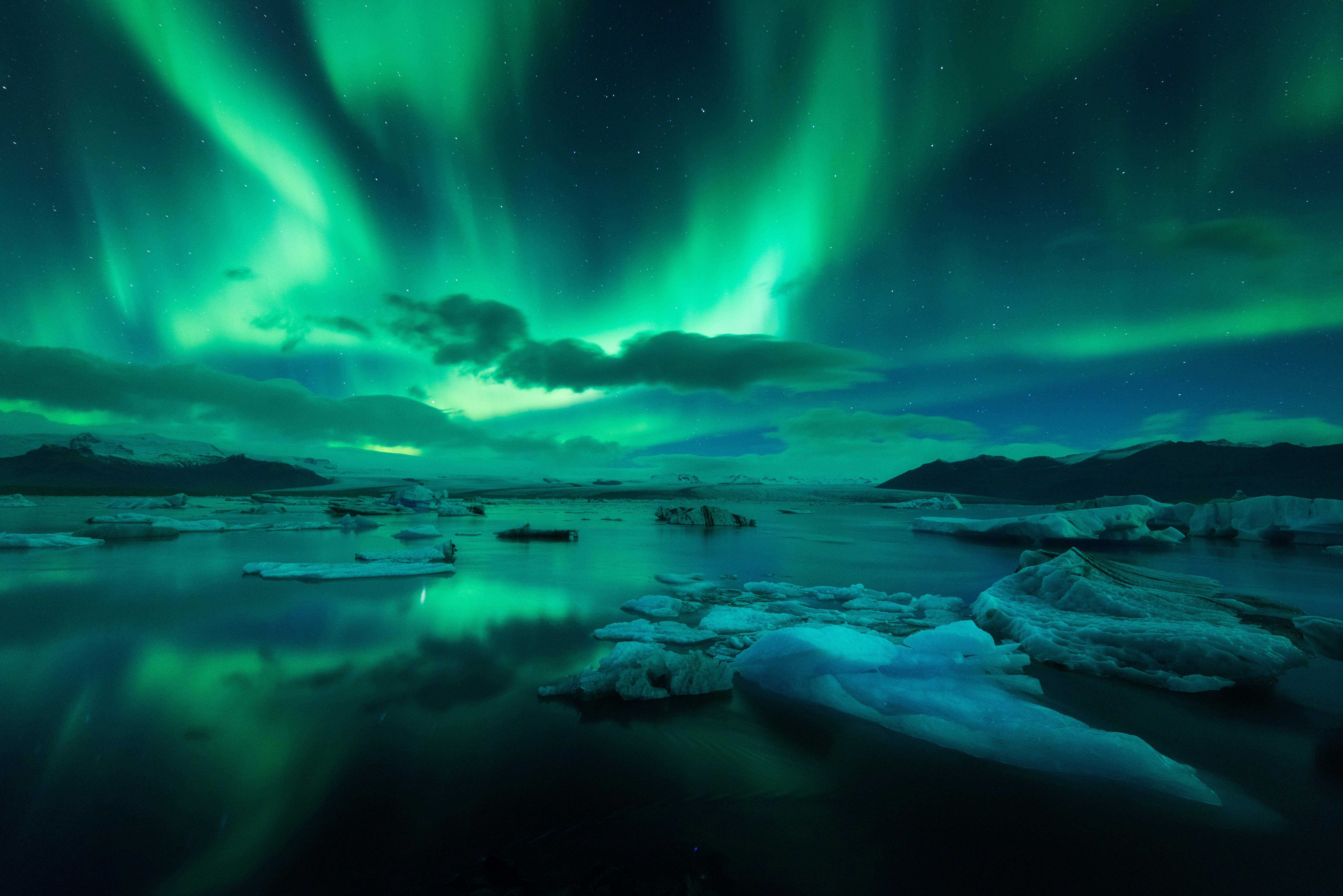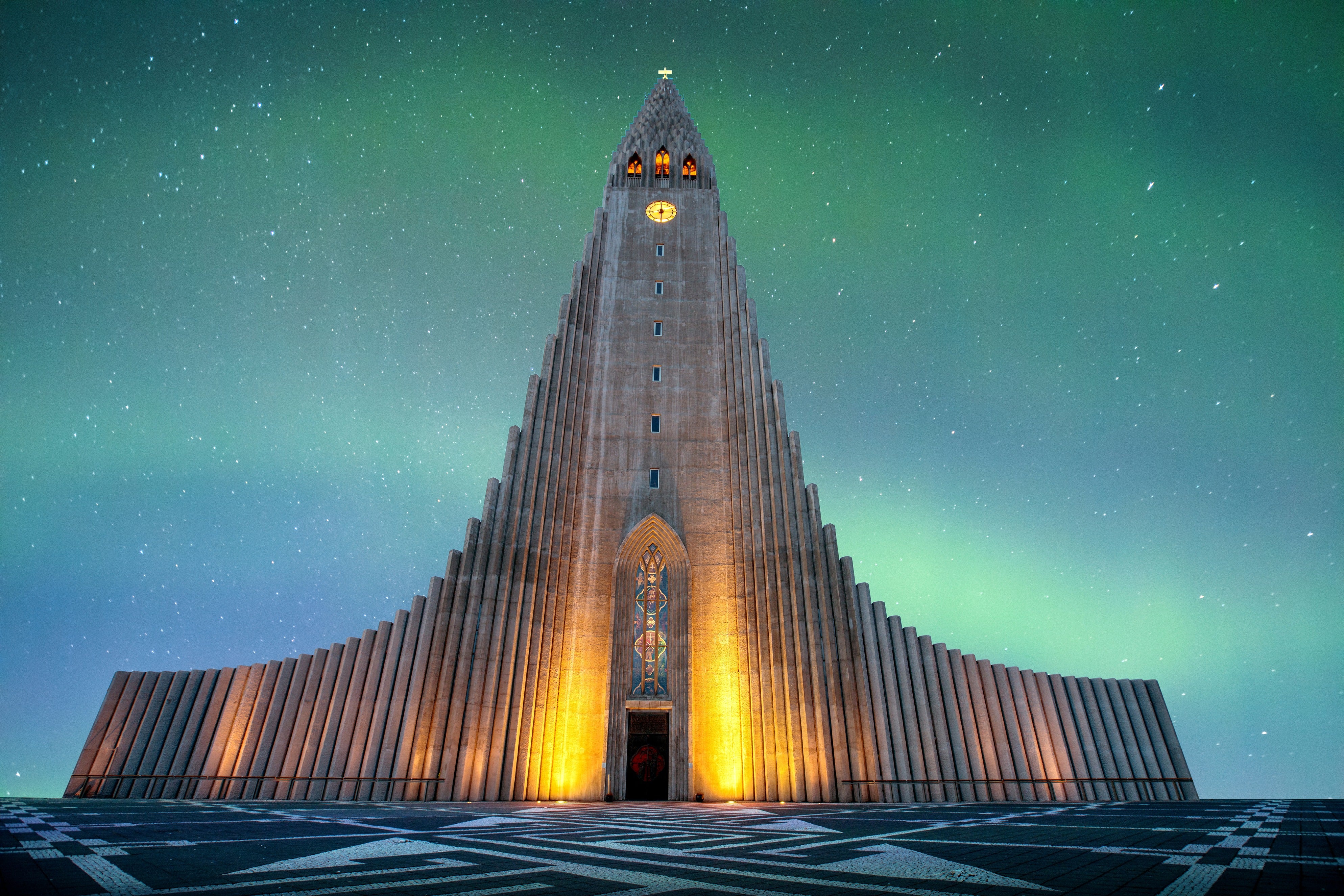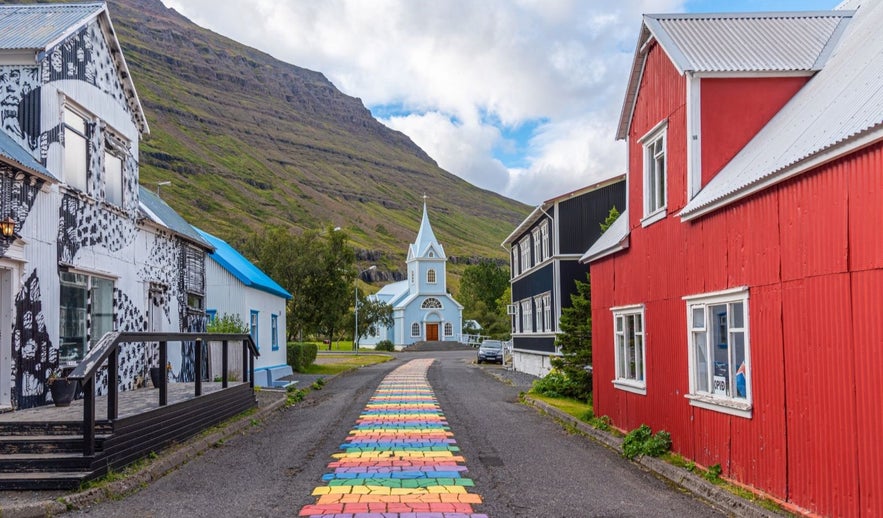
Seydisfjordur to liczące około 668 mieszkańców miasto we wschodniej Islandii, położone w narożniku fiordu o tej samej nazwie.
Poznaj ten region podczas samodzielnej wycieczki po Islandii, a jeśli planujesz pobyt w tym uroczym miasteczku, koniecznie zarezerwuj zakwaterowanie w Seydisfjordur.
Dlaczego warto zaufać naszym treściom
Guide to Iceland to najbardziej zaufana platforma podróżnicza na Islandii, pomagająca milionom turystów każdego roku. Wszystkie nasze treści są pisane i recenzowane przez lokalnych ekspertów, którzy doskonale znają Islandię. Możesz polegać na nas, otrzymując dokładne, aktualne i wiarygodne porady podróżnicze.
Miejscowość jest otoczona górami i wodospadami, wśród których wyróżniają się góry Bjólfur (1085 m n.p.m.) na zachodzie i Strandartindur (1010 m n.p.m.) na wschodzie, obie stanowiące część islandzkiego szlaku siedmiu szczytów.
Gospodarka
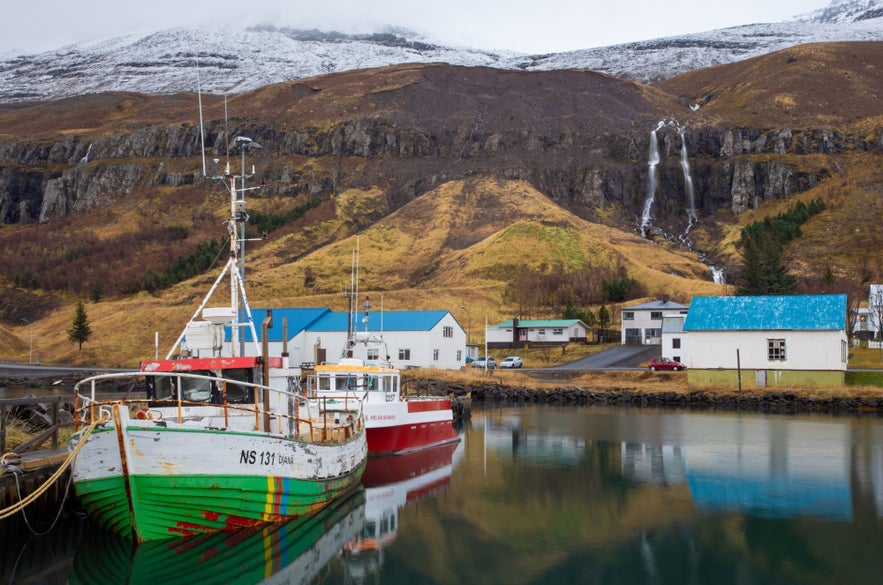 Główną gospodarką Seydisfjordur w całej swojej historii był przede wszystkim przemysł rybny, ale w ostatnich latach odnotowano wzrost turystyki. Miasto posiada spory port, z którego odpływa prom Norraena podróżujący do Skandynawii.
Główną gospodarką Seydisfjordur w całej swojej historii był przede wszystkim przemysł rybny, ale w ostatnich latach odnotowano wzrost turystyki. Miasto posiada spory port, z którego odpływa prom Norraena podróżujący do Skandynawii.
Seydisfjordur oferuje wiele usług dla podróżnych, w tym opcje zakwaterowania, i staje się coraz bardziej popularny ze względu na coroczny festiwal sztuki LungA.
Kultura i historia
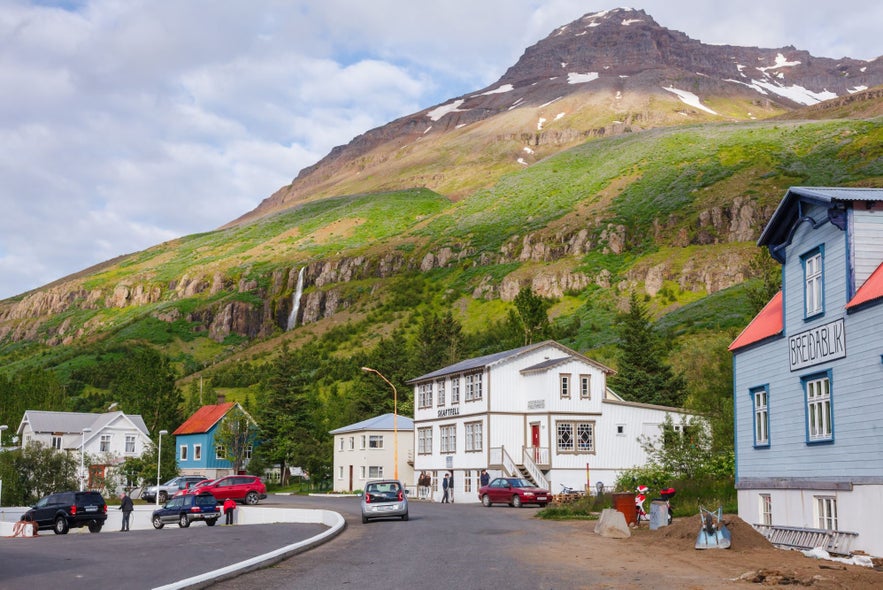 Osada Seydisfjordur zaczęła się rozwijać jako centrum handlowe w 1848 roku, kiedy to mieszkańcy miasta znaleźli swoje bogactwo w „srebrze morza” - śledziu. Długi, ochronny fiord dał rybakom z Seydisfjordur przewagę nad sąsiadami, dzięki czemu miasto stało się jednym z najlepiej prosperujących ośrodków we wschodniej Islandii. Unikalne, wielokolorowe drewniane budynki, które sprawiają, że Seydisfjordur jest tak rozpoznawalne, zostały zbudowane w tym okresie przez norweskich kupców i wielorybników. Wciąż można odwiedzić ruiny ich stacji wielorybniczej Vestdalseyri położonej wzdłuż wybrzeża Seydisfjordur.
Osada Seydisfjordur zaczęła się rozwijać jako centrum handlowe w 1848 roku, kiedy to mieszkańcy miasta znaleźli swoje bogactwo w „srebrze morza” - śledziu. Długi, ochronny fiord dał rybakom z Seydisfjordur przewagę nad sąsiadami, dzięki czemu miasto stało się jednym z najlepiej prosperujących ośrodków we wschodniej Islandii. Unikalne, wielokolorowe drewniane budynki, które sprawiają, że Seydisfjordur jest tak rozpoznawalne, zostały zbudowane w tym okresie przez norweskich kupców i wielorybników. Wciąż można odwiedzić ruiny ich stacji wielorybniczej Vestdalseyri położonej wzdłuż wybrzeża Seydisfjordur.
W nowszych czasach Seydisfjordur był bazą dla sił alianckich podczas II wojny światowej. Jedyny odnotowany atak u wybrzeży Islandii dotyczył brytyjskiego tankowca El Grillo („The Cricket”), który stał na kotwicy w fiordzie. Po silnym bombardowaniu przez niemieckie myśliwce stacjonujące w Norwegii kapitan El Grillo zdecydował się zatopić statek. Okręt został zatopiony bez strat w ludziach i obecnie spoczywa na dnie fiordu. Wrak jest dziś popularnym miejscem wśród płetwonurków.
Najstarsza elektrownia na Islandii znajduje się w pobliżu miasta Seydisfjordur.
Miejscowość ma tętniącą życiem scenę kulturalną. W mieście znajduje się rezydencja poświęcona artyście Dieterowi Rothowi. Oprócz tego w Seydisfjordur mieści się również studio sztuki, muzeum telekomunikacji, centrum sztuki, jedno z dwóch kin we wschodniej Islandii oraz, jak wspomnieliśmy, coroczny festiwal LungA.
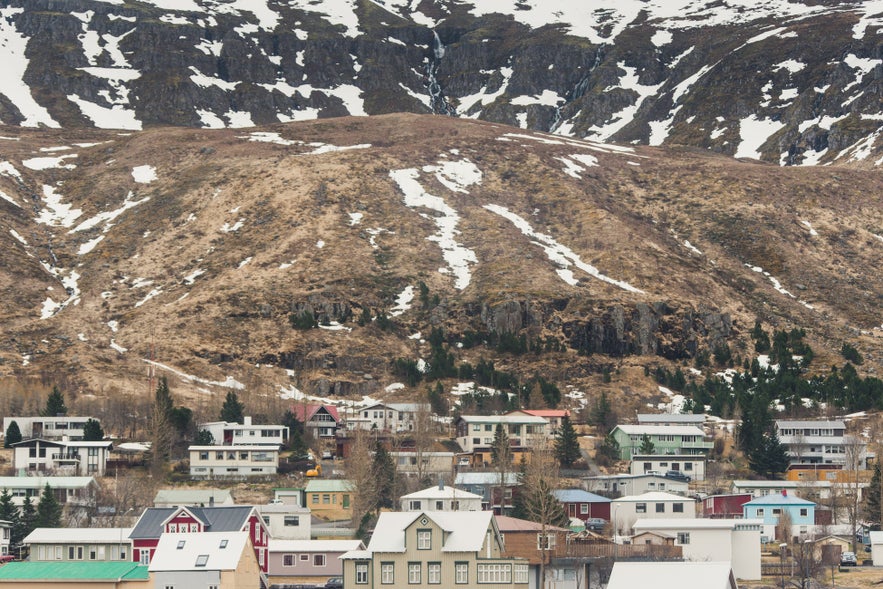
Autor zdjęcia: Midorie Villeneuve Chassé
Festiwal LungA odbywa się w połowie lipca. Jest to święto sztuki młodzieżowej. Nazwa festiwalu to połączenie islandzkiego słowa „sztuka” (lista) i słowa „młody” (ungur) i obejmuje warsztaty, wystawy, pokaz mody i koncerty. W festiwalu wzięło udział wielu czołowych islandzkich muzyków.
Przyroda i okolica
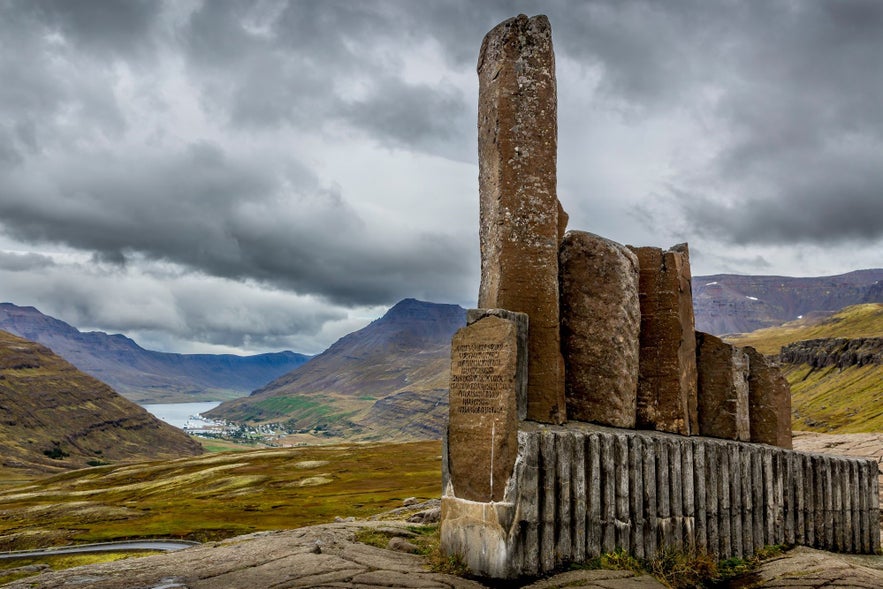 Miejscowość Seydisfjordur otoczona jest niesamowitą przyrodą, w tym górami, wodospadami i pięknymi widokami na morze. Około 17 kilometrów od miasta znajduje się rezerwat Skalanes, będący centrum badań naukowych i ochrony przyrody. Rezerwat ten, obejmujący ponad 1200 hektarów, znany jest z różnorodnej fauny i flory, obejmującej 47 gatunków ptaków, cztery gatunki islandzkich ssaków i ponad 150 gatunków roślin.
Miejscowość Seydisfjordur otoczona jest niesamowitą przyrodą, w tym górami, wodospadami i pięknymi widokami na morze. Około 17 kilometrów od miasta znajduje się rezerwat Skalanes, będący centrum badań naukowych i ochrony przyrody. Rezerwat ten, obejmujący ponad 1200 hektarów, znany jest z różnorodnej fauny i flory, obejmującej 47 gatunków ptaków, cztery gatunki islandzkich ssaków i ponad 150 gatunków roślin.
Renifery wędrują po okolicy, a foki i morświny często odwiedzają wybrzeże. Można tu znaleźć ponad 90 stanowisk archeologicznych, z których większość pochodzi z czasów wojny. Na terenie rezerwatu mieści się także przytulny pensjonat.
Zróżnicowany zakres siedlisk objętych rezerwatem — słodkowodne mokradła, międzypływowe, klify, łąki — przyciągnął badaczy z zagranicy, czyniąc Skálanes doskonałym przykładem współpracy międzynarodowej i akademickiej. Dzięki Skálanes poczyniono postępy w tak rozległych dyscyplinach, jak archeologia, antropologia, językoznawstwo i ochrona środowiska, by wymienić tylko kilka z nich.
Lokalizacja
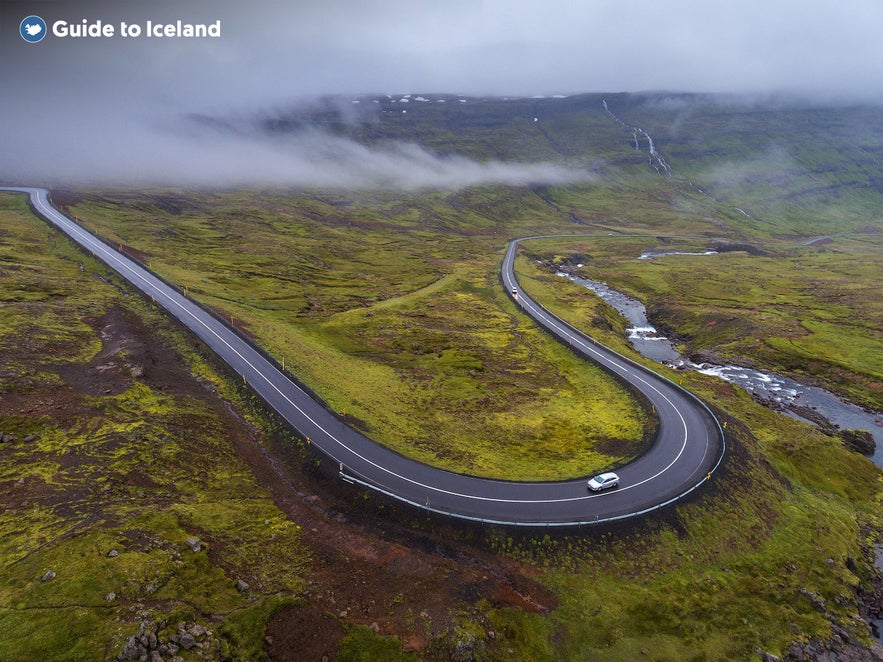 Strome zbocza dolin Seydisfjordur sprawiają, że miasto jest podatne na lawiny. Jedna z nich w 1885 r. zabiła 24 osoby, zapisując się jako największa tragedia lawinowa w historii tego młodego kraju. Pomnik ku czci zmarłych stoi obecnie w mieście i został zbudowany z belek zniszczonej fabryki. Niedawno, w 1996 roku, lawina zmiażdżyła inną lokalną fabrykę. Na szczęście nikt nie został ranny. Od tego czasu wokół miasta zbudowano zapory lawinowe, niektóre o wysokości nawet 20 metrów.
Strome zbocza dolin Seydisfjordur sprawiają, że miasto jest podatne na lawiny. Jedna z nich w 1885 r. zabiła 24 osoby, zapisując się jako największa tragedia lawinowa w historii tego młodego kraju. Pomnik ku czci zmarłych stoi obecnie w mieście i został zbudowany z belek zniszczonej fabryki. Niedawno, w 1996 roku, lawina zmiażdżyła inną lokalną fabrykę. Na szczęście nikt nie został ranny. Od tego czasu wokół miasta zbudowano zapory lawinowe, niektóre o wysokości nawet 20 metrów.
